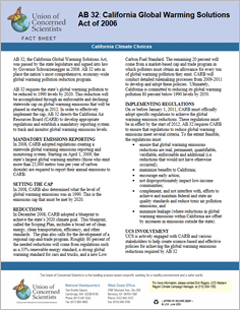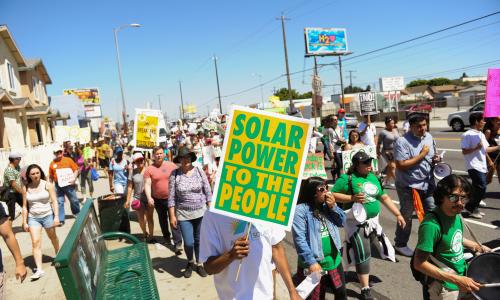AB 32, the California Global Warming Solutions Act, was passed by the state legislature and signed into law by Governor Schwarzenegger in 2006. AB 32 sets in place the nation’s most comprehensive, economy-wide global warming pollution reduction program.
AB 32 requires the state’s global warming pollution to be reduced to 1990 levels by 2020. This reduction will be accomplished through an enforceable and declining statewide cap on global warming emissions that will be phased in starting in 2012. In order to effectively implement the cap, AB 32 directs the California Air Resources Board (CARB) to develop appropriate regulations and establish a mandatory reporting system to track and monitor global warming emissions levels.




